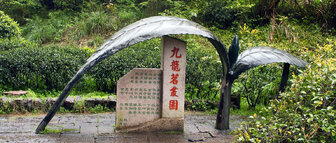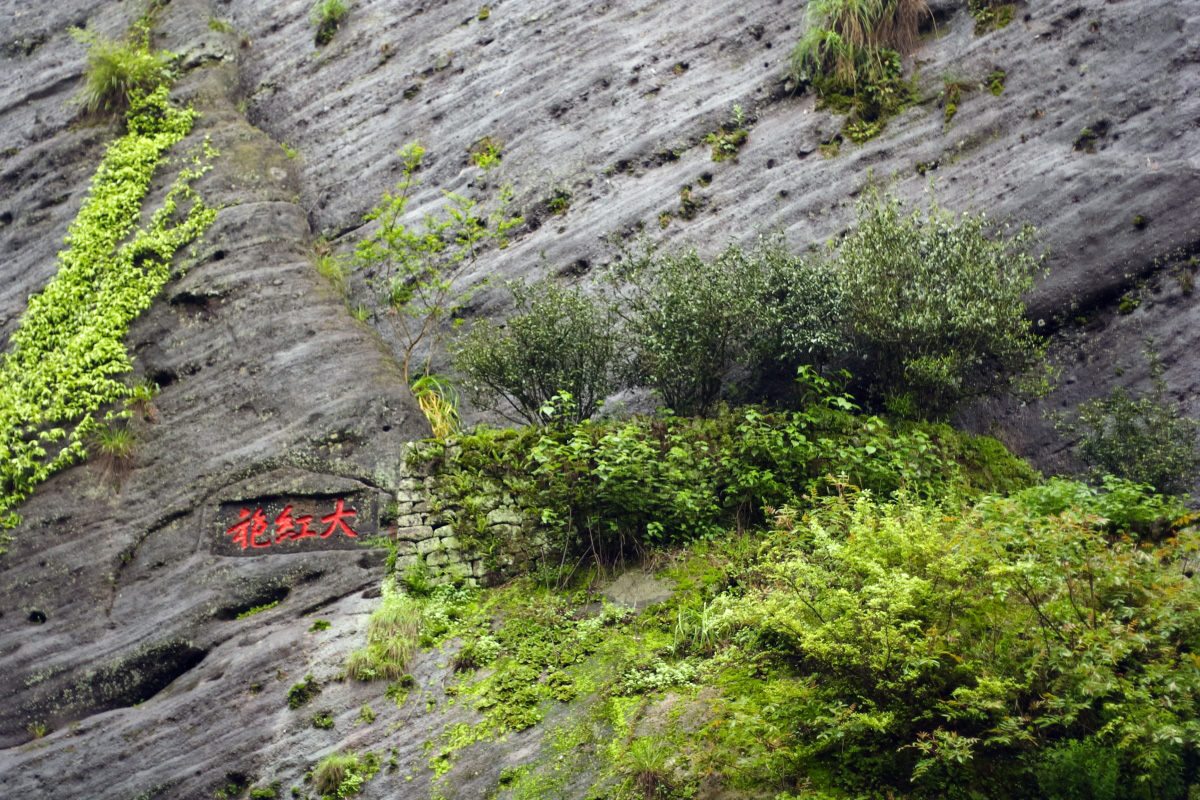It was April 4, 2010, Easter Monday. The morning was rainy, our bags were packed, and we were about to embark on a three-week expedition to the birthplace of tea – China, where the beneficial effects of tea have been known for 5,000 years. The flight from Prague to Paris to Beijing was filled with great anticipation of when our feet would finally touch the ground. We arrived in Beijing in the afternoon. Our business partner was already waiting for us at the airport, and after completing the formalities, we headed to our teacher at the tea school. The next day, a week-long tea training course began, aimed at expanding our knowledge and deepening our understanding of tea (Chinese terminology, quality assessment, growing regions, etc.) and tea skills (preparing tea using the Kung Fu Cha ceremony). The week-long training was concluded with a difficult all-morning test with a theoretical and practical part and a certificate from the State Tea Authority. We spent our evenings in Beijing visiting famous tea houses and meeting interesting people. We left Beijing saturated with information that, unfortunately, cannot be found in the available literature. The night train journey was crowned by a foggy morning in the Wuyi Mountains, the birthplace of the famous rocky oolongs.
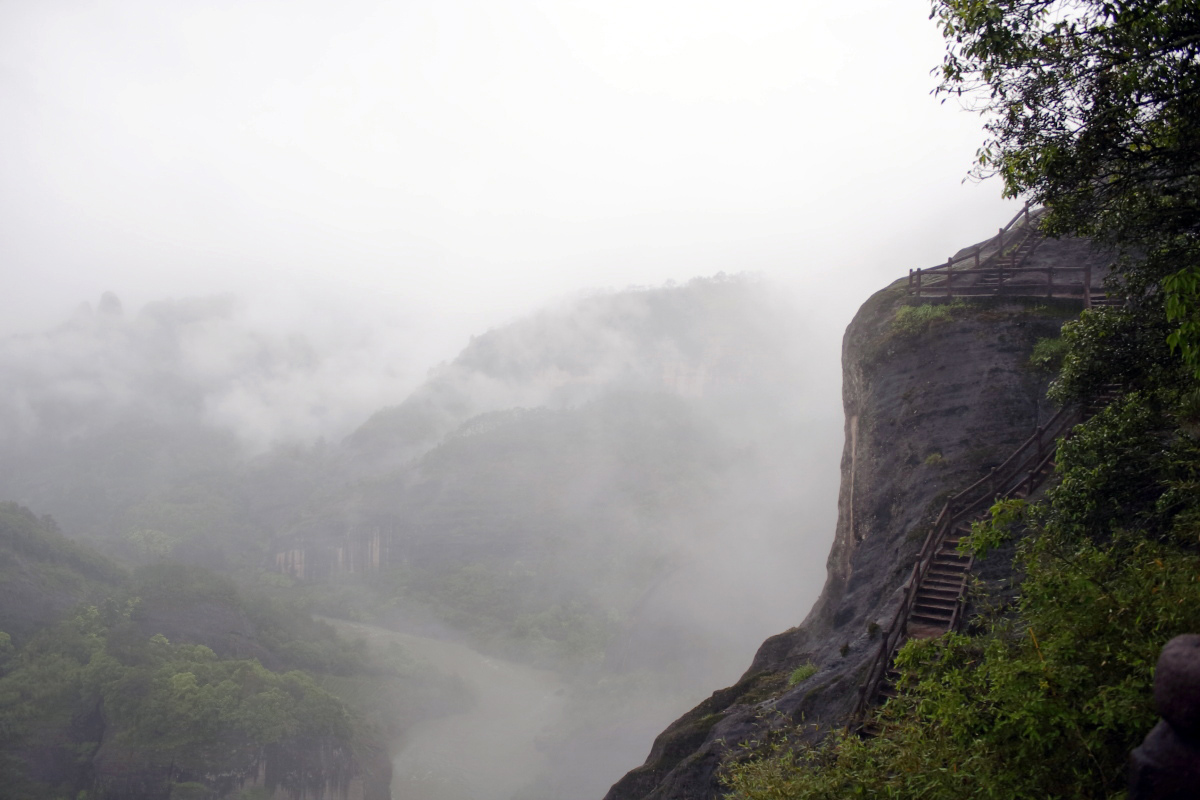 |
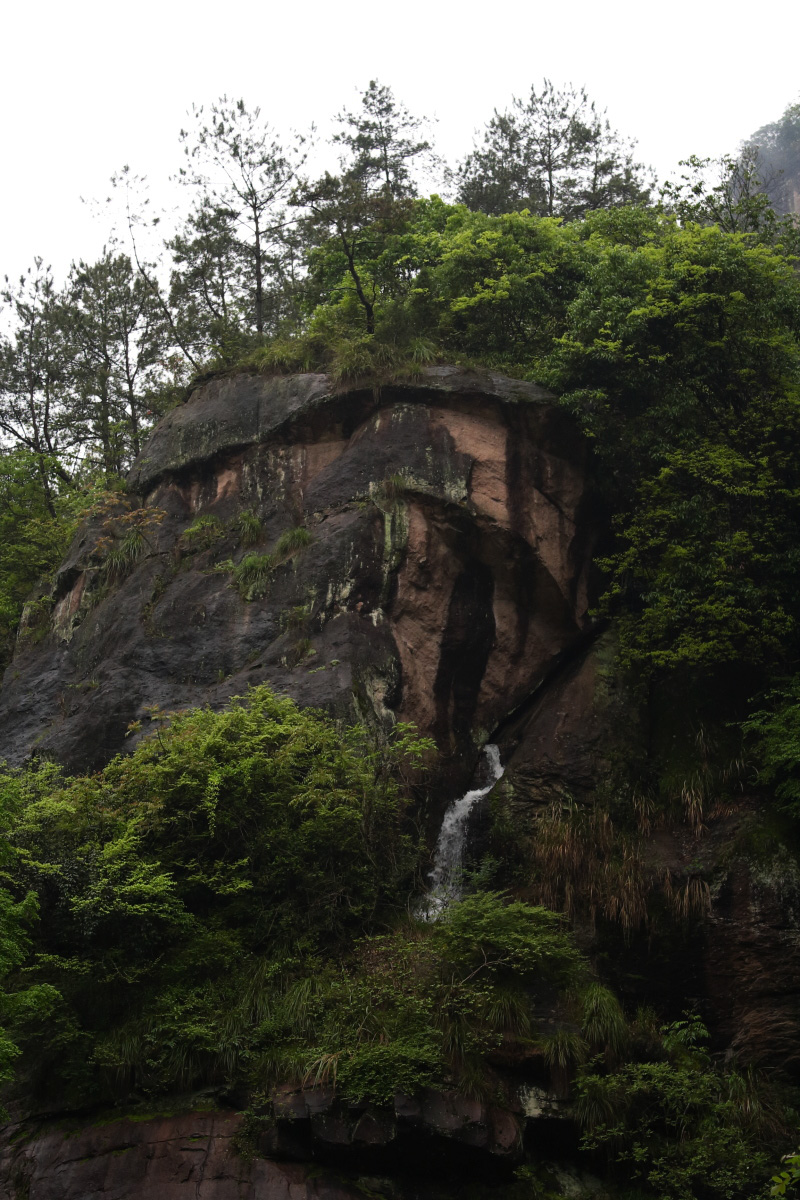 |
Rocky oolongs from the Wuyi Mountains
The Wuyi Mountains are located in the north of Fujian Province. The area belongs to the subtropical zone with average annual temperatures of around 18 to 18.5 °C. Precipitation is excessive there – 2,000 millimeters per year – and the average humidity is 80%. This natural area covers 70 km². Most of the peaks reach a height of 400 m above sea level, with the highest peak, Sanyang, reaching 717 m above sea level. The landscape of the Wuyi Mountains is a perfect combination of the elements of earth and water. "It is the water that makes these mountains beautiful, not their height." In 1999, this area was declared a World Heritage Site by UNESCO. Walking along the mountain paths, we saw tea trees growing in rocky valleys and in places we had no idea how to get to. Wuyi is the most beautiful place in the world we have had the opportunity to visit so far. The mountains are located in the Jiuquxi River area, and each of them is unique and inimitable. The Jiuquxi River, also known as the River of 9 Turns and 18 Bends, originates in the Huanggang Mountains. Together with 36 peaks and 99 rocks, the river creates a unique natural and ecological environment for rock teas (Wuyi Yan Cha). Thanks to mild winters and relatively cool summers, the Wuyi region has excellent conditions for tea cultivation. These bushes tolerate shade and less light in the morning and evening. Light in the longer wavelengths of the orange to blue-violet spectrum affects their photosynthesis. The orange spectrum of light causes the plant to produce more carbohydrates, while blue and violet light causes it to produce more amino acids and proteins. The unique composition of the soil, rich in minerals, contributes significantly to the taste and quality of the tea. The "essence of the rocks" can be felt in every cup.
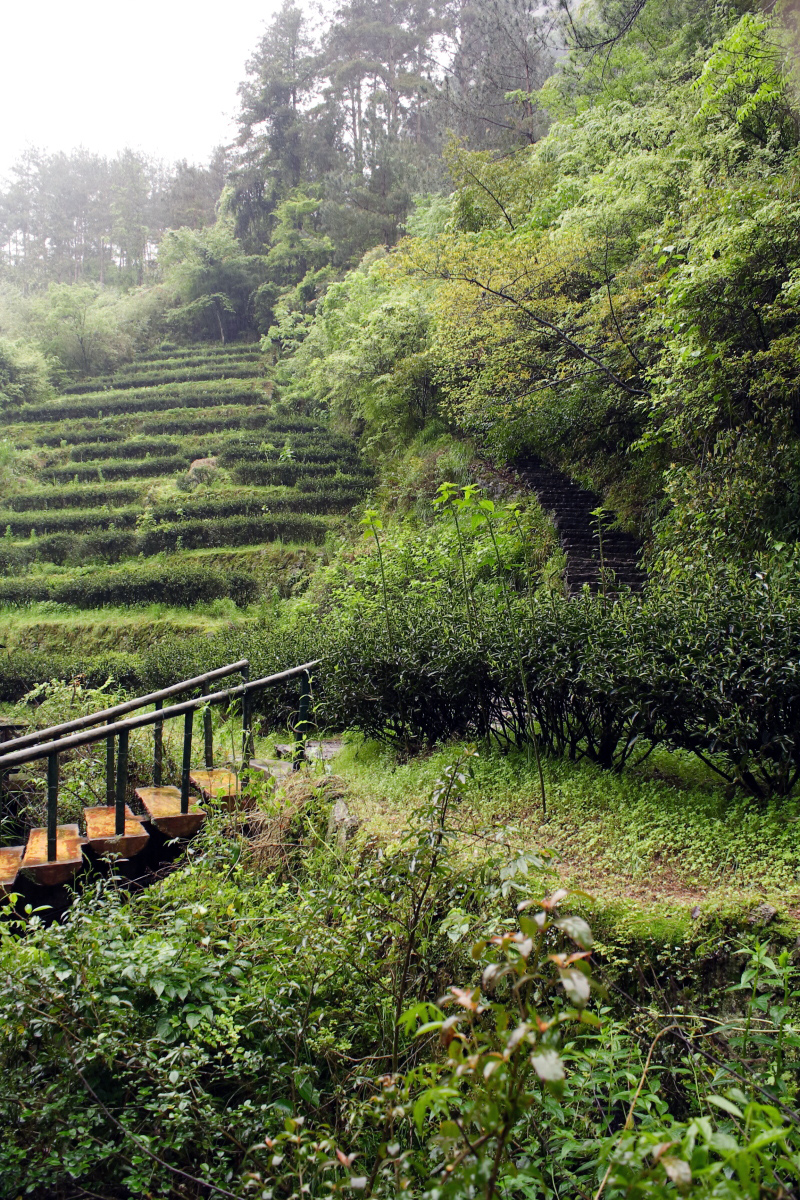 |
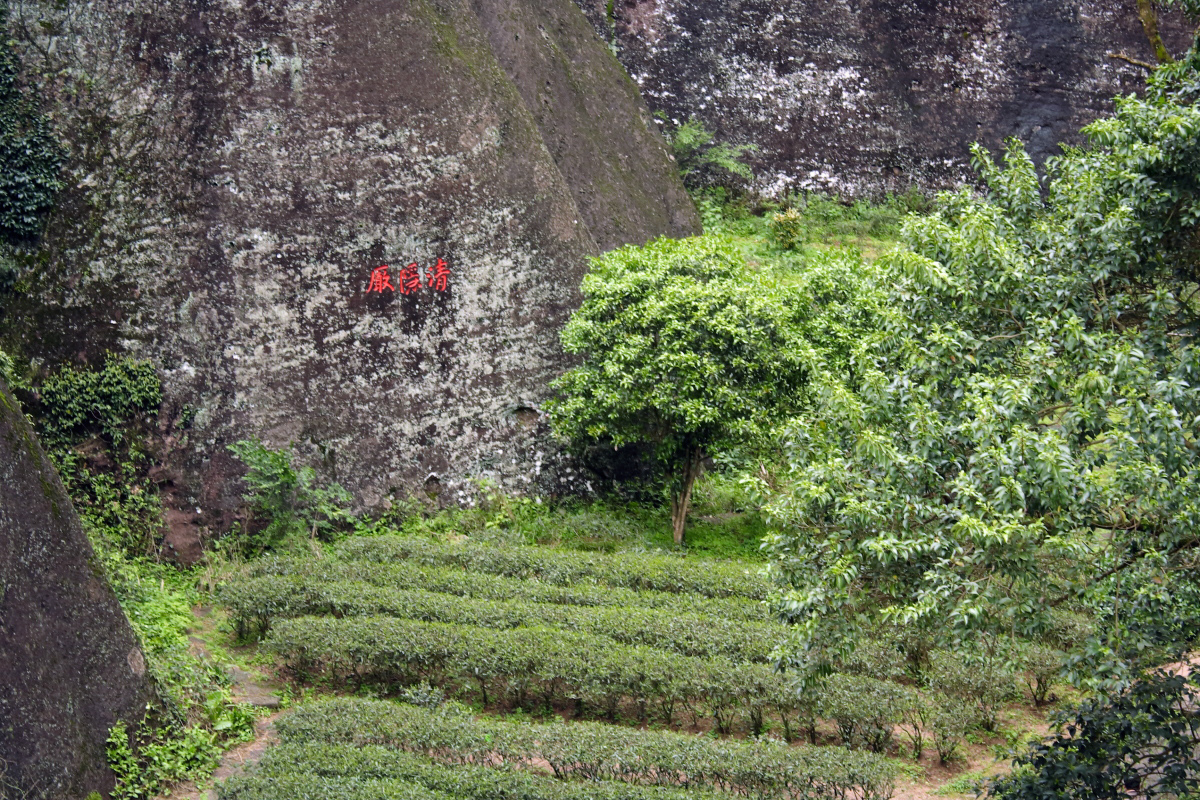 |
Tea Theater
The beauty and grandeur of the mountains was captured by the famous contemporary Chinese director and producer Zhang Yimou, who also directed the opening ceremony of the 2008 Olympic Games in Beijing, in the theatrical performance Impression – Da Hong Pao. Luck was on our side, and our guide managed to get tickets for us. We watched in awe, our mouths agape, the entire time. Imagine the entire auditorium spinning around you and the rocks lit up in colors to complement the atmosphere of what is happening on stage. Period sailing ships float down the river, trees glow, and in some places, up to 400 actors perform tea stories. Believe me, you would also forget that rain is falling on you from the heavens throughout the entire performance. While wandering along mountain paths, we also visited a tea house under 600-year-old tea trees, where, in addition to the most famous rock tea, Da Hong Pao, which was properly prepared for us, we did not miss out on the local culinary specialty, a spicy egg cooked in Da Hong Pao tea leaves. Yum. Just for fun, every other year, the original six tea trees produce about 400 g of tea, half of which goes to the president and the rest is auctioned off. At the last auction, 20 g of this tea was sold for an incredible €21,000.
From harvest to tea
Wang Caotang's book on tea (1717) from the Qing dynasty states: "Rock teas from Wuyi are harvested from the 'grain rain' period (rain that helps grain grow), i.e., from April 19, 20, or 21, until the beginning of summer, i.e., May 5, 6, or 7. To achieve the highest quality tea, the first 3 to 4 leaves are picked, and three other conditions must be met. Tea must not be picked in the rain, until the dew has disappeared, or in strong sunlight. The best time to pick is therefore in the morning from 9 to 11 a.m. and in the afternoon from 2 to 3 p.m. During our visit to the Wuyi Mountains, we had a unique opportunity to gain knowledge at the Wu Yi Shan Tea Research Institute. We visited a research garden where more than 130 tea cultivars are planted and were introduced to the most famous ones. The visit also included a detailed explanation of tea processing in the factory. The freshly picked tea leaves are spread out on bamboo sieves, which the master places in the sun and wind (wilting in the sun). When the tea leaves slowly wither, the master lets them "dance" on the bamboo sieve; when tossed, the tea leaves begin to oxidize. The master stops this process when, based on his experience, he decides that the tea has been roasted enough in the pan. The leaves are then kneaded to give the tea the desired shape (wires). The tea is then placed over a direct fire and exposed to high and low temperatures. This evaporates excess water from the leaves and preserves the shape of the tea. After this stage, the tea is sorted and unwanted tea leaves are removed. In the final stage, it is baked (to fix the aroma) over a wooden fire covered with ash, which prevents high temperatures. During this process, the leaves must be stirred regularly to create a homogeneous tea.
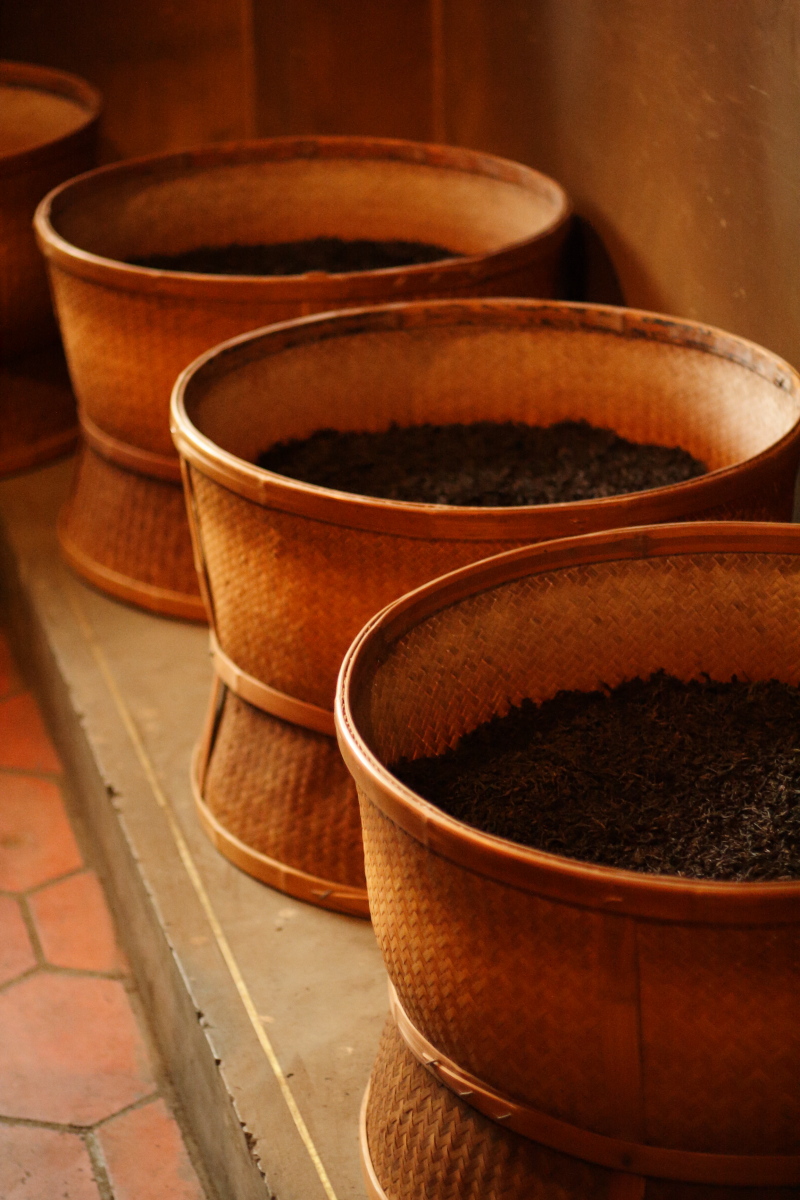 |
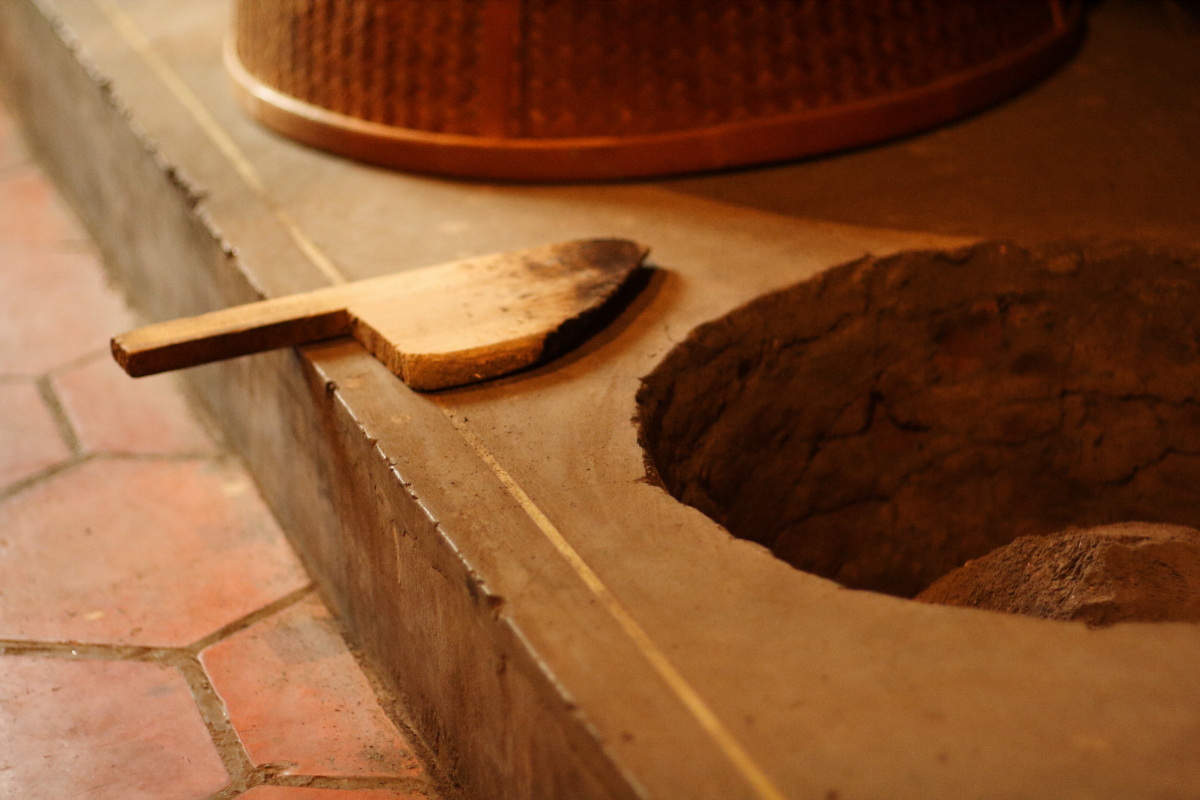 |
The character of Wuyi teas
High-quality rock tea from the Wuyi Mountains has dark leaves with a bluish tinge and red edges. The bluish color is the result of roasting, while the red color is the result of baking. Teas from this region smell of rocks and flowers. The infusion is delicious with a strong aroma, has a natural and pure taste, and is clear, golden to light orange in color. After brewing, the leaves are dark green with reddish edges. This category of teas includes teas with the Wu Yi Shan designation, namely Da Hong Pao, Shui Hsien, Qi Lan, Tie Lo Han, Bai Ji Guan, and others. We recommend preparing these teas in porcelain, where their aroma can fully develop. First, warm the porcelain, add 5 to 6 g of tea and pour (at the research institute in Wu Yi Shan they used 10 g) 1.5 dcl of boiled water at a temperature of 98 to 100 °C. Immediately pour off the first infusion and smell the steamed leaves, which release a wonderful floral aroma (lower grades only smell of fire and smoke). Pour water over the tea again, remove the foam that has formed on the surface with a lid (natural saponin content), and steep for 20 seconds. Pour the tea into bowls and drink. It is best enjoyed as hot as possible, sipped from small bowls, as is customary in China. For subsequent infusions, gradually increase the steeping time to 30, 40, 60, 90, and 120 to 300 seconds. High-quality tea can be used to prepare 6 to 7 infusions. In catering establishments, we recommend pouring 0.5 l of boiling water over 5 to 6 g of tea leaves and steeping for 2 to 4 minutes, depending on the taste and type of tea.
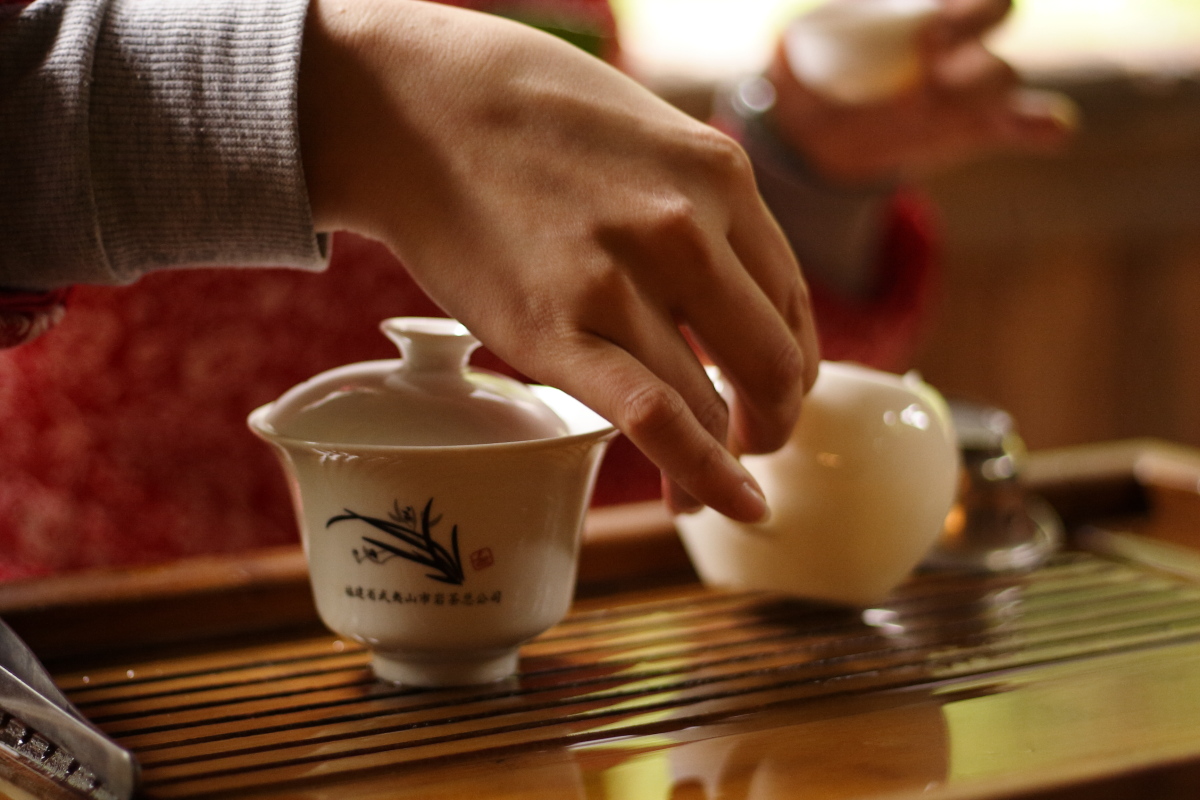 |
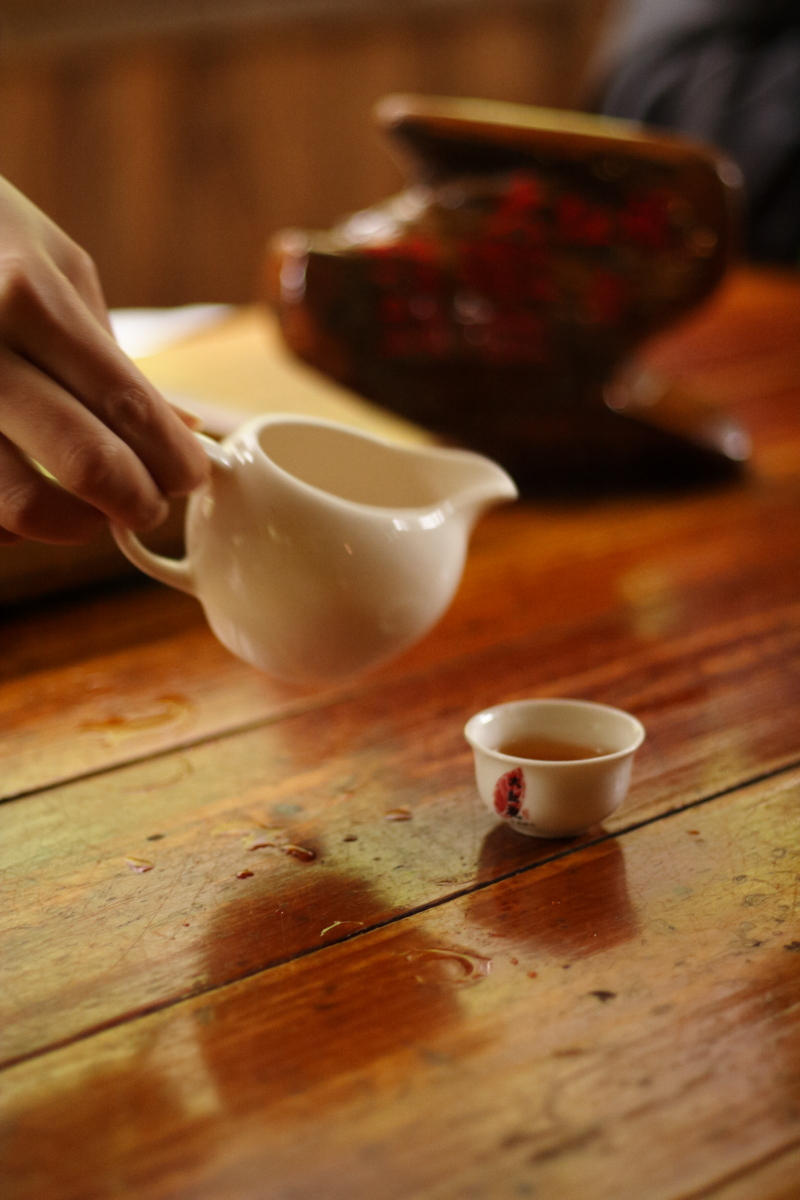 |
It's time to move on
The Wu Yi Mountains will remain in our hearts for the rest of our lives, and if we had to choose just one place to return to in our lifetime, it would be this one. However, our story does not end here. We board the train, having completed 10 days and nearly 2,000 km of the Tea Road, with another 11 days and 4,500 km full of experiences ahead of us.
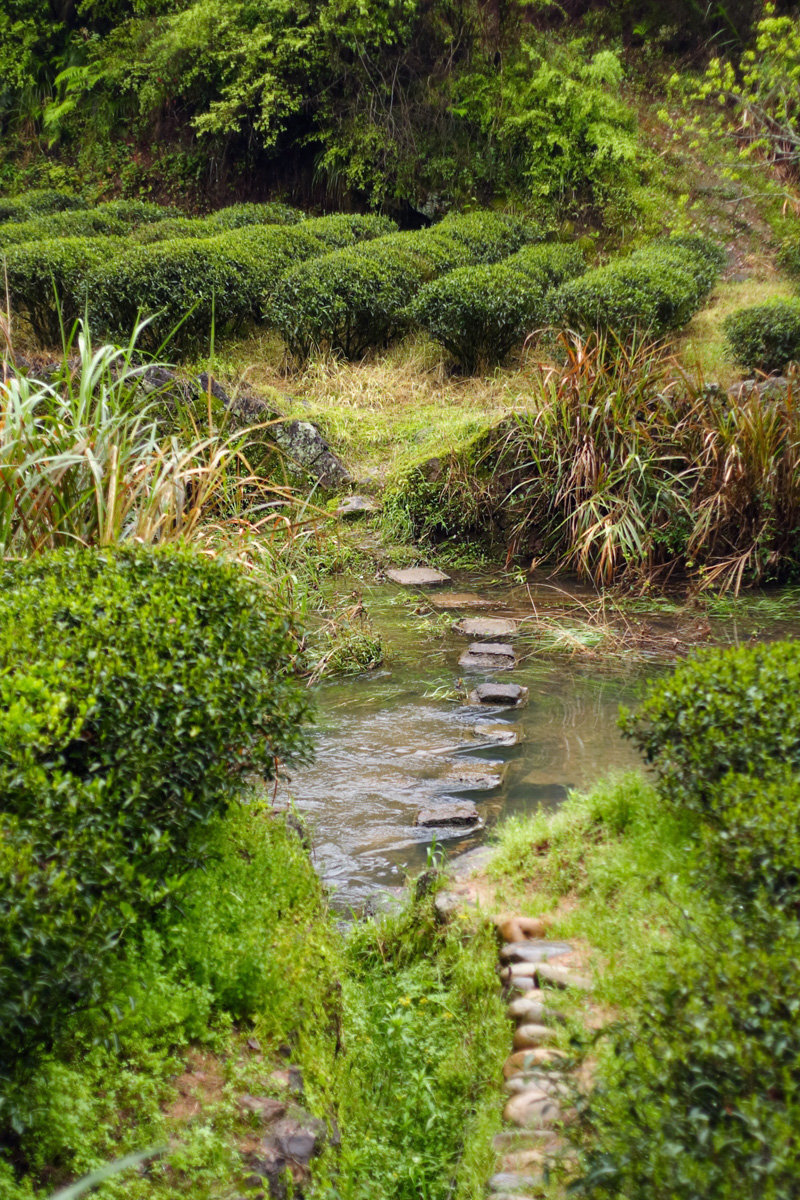 |
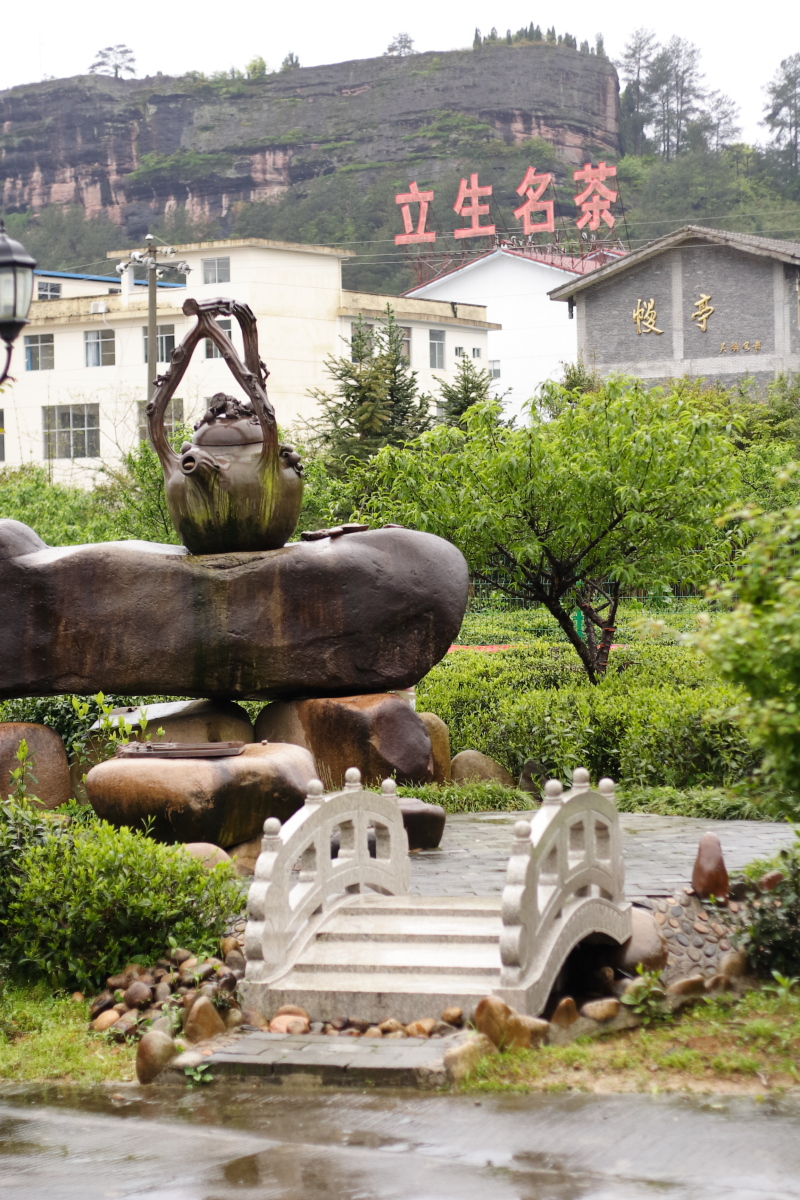 |
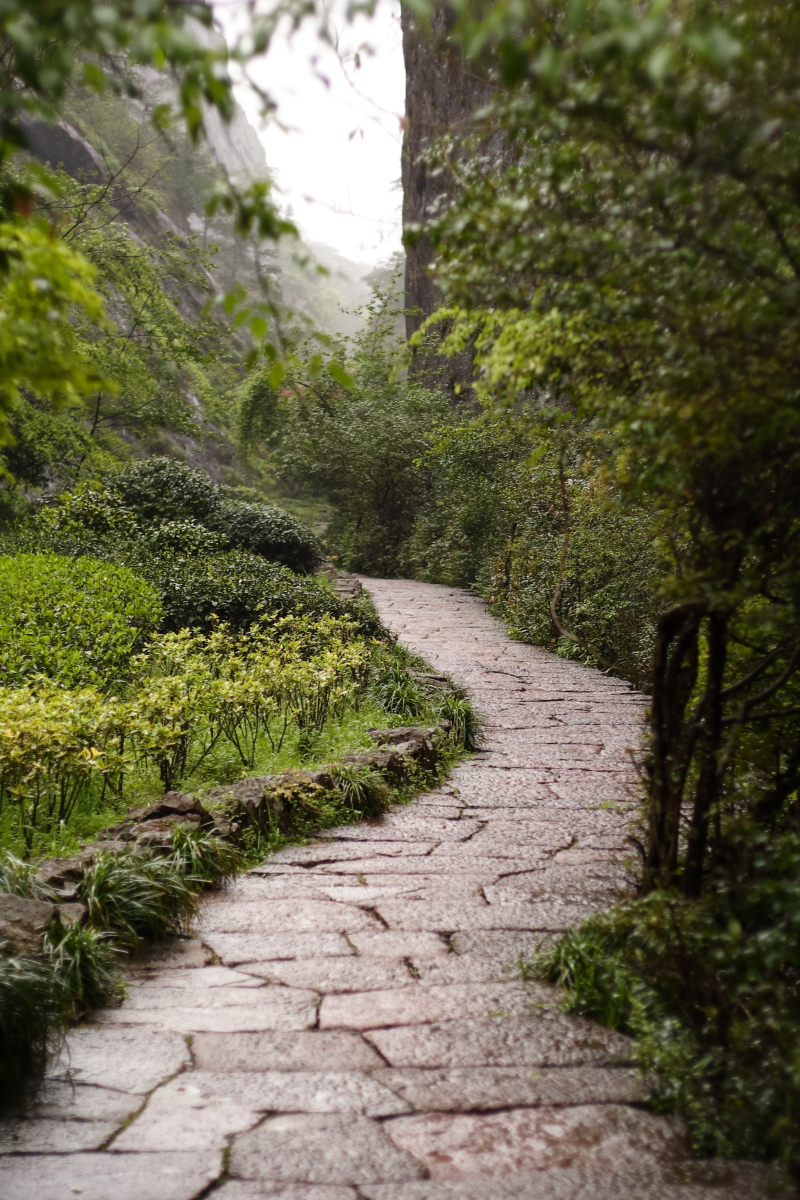 |
The article was published in HORECA magazine (January–February 2011).
